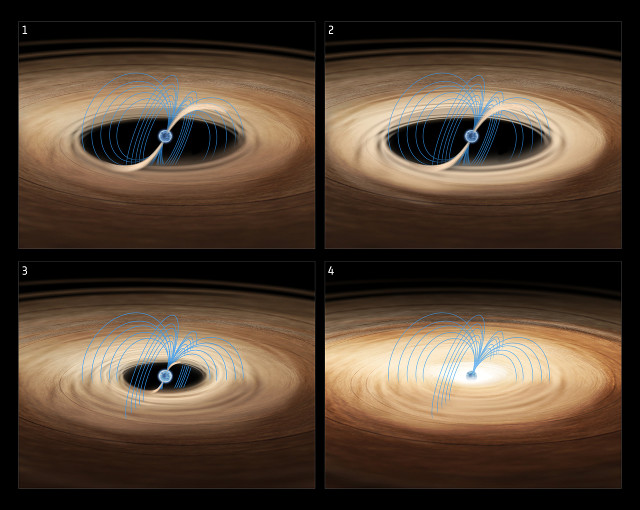
An article published in the journal “Monthly Notices of the Royal Astronomical Society” describes a research that provides an explanation for an astronomical mystery dating back to the 1970s. A team of researchers of the Anton Pannekoek Institute for Astronomy in Amsterdam led by Jakob van den Eijnden discovered a gap in the accretion disk of the binary system MXB 1730-335, known as Rapid Burster for its rapid and discontinuous X-ray flashes.
Rapid Burster’s binary system is formed by a common low-mass star and a neutron star, what is left after a supernova. The neutron star’s powerful gravity strips its companion of some gas and that forms an accretion disk. The consequence is that these binary systems emit X-rays and X-rays flashes every few hours or days. These are called type-I bursts, caused by nuclear reactions triggered by the gas, especially hydrogen, that accumulates on the neutron star’s surface.
There’s the possibility that there are type-II flashes, with sudden, erratic and very intense X-ray releases. They liberate massive amounts of energy during periods that are otherwise characterized by low emissions. So far, type-II bursts were detected only in Rapid Burster and in a pulsar, a type of neutron star, discovered in the 1990s. Only two cases made it difficult to understand the physical mechanisms that caused those flashes, which were the subject of discussion, at least so far.
The team that conducted this new research used NASA’s NuSTAR (Nuclear Spectroscopic Telescope Array) and Swift and ESA’s XMM-Newton (X-ray Multi-Mirror satellite) space telescopes. These instruments specialized for X-ray astronomy allow to study Rapid Burster in a way unthinkable in the 1970s, when it was discovered, finding what seems the causes of type-II bursts.
According to the researchers, everything starts from the neutron star’s magnetic field, a billion times more powerful than the Earth’s. In the reconstruction, you can see how in the first image the magnetic field prevents the gas coming from the companion to approach creating a gap in the accretion disk. When the gas accumulates near the gap’s edge, it rotates faster and faster as in the second image and eventually reaches the same speed as the magnetic field.
In the third image you can see the gas that accumulates more and more and with the rotation synchronized with the magnetic field ends up reach the neutron star in the fourth image. At that point, the gas hits it all at once, producing not a normal type-I flash but the much more intense type II flash. The process is even better seen in the clip.
The observations show a gap of about 90 kilometers between the neutron star and the accretion disk’s inner edge. That may seem thing but the neutron star is super-compact, with radius of about 10 kilometers. A similar range was found in the past in the pulsar that constitutes the other example of type-II bursts.
Rapid Burster’s magnetic field of is over five times more powerful than that found in other neutron stars that have a small star as a companion. This suggests that the binary system is young and that the accretion process hasn’t in place long enough to dampen the magnetic field. The next phase of the research will be to measure the neutron star’s rotation speed to try to better evaluate its characteristics, including its age.

